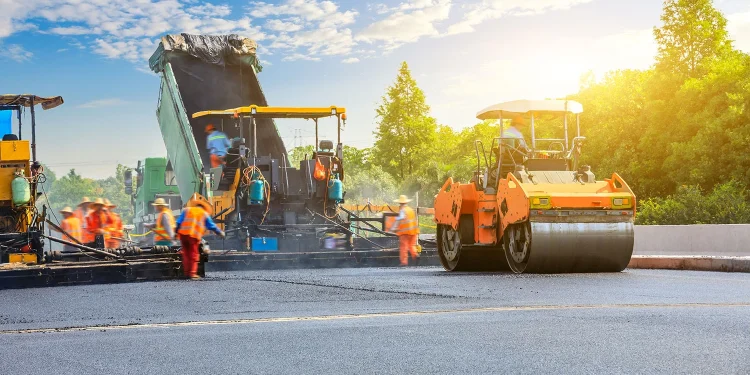Road construction is a necessary part of maintaining safe and efficient highways, but it often creates hazards for drivers. Detours, lane closures, and shifting traffic patterns can confuse motorists and increase the risk of accidents. One of the most common types of crashes in these zones is the rear-end collision.
Rear-end crashes may sound minor compared to high-speed accidents, but in construction zones they can be serious, leading to severe injuries and even fatalities. Understanding how detours contribute to these collisions is important for both drivers and accident victims seeking to protect their rights. Andy Citrin Injury Attorneys has extensive knowledge of the challenges of these types of cases.
Table of Contents
Why Detours Create Dangerous Conditions
Detours are designed to redirect traffic around road work. While they serve an important purpose, they also disrupt the normal flow of traffic. Drivers are forced to adjust quickly to unfamiliar routes, narrower lanes, and sudden stops. These changes increase the chances of rear-end collisions for several reasons:
- Unexpected Slowdowns: Cars may need to stop abruptly due to lane merges or flaggers controlling traffic flow.
- Confusing Signage: Detour signs are sometimes unclear, leaving drivers unsure of where to go.
- Reduced Lane Width: Narrow lanes and lack of shoulders limit maneuverability, giving drivers less room to avoid crashes.
- Distraction: Drivers may focus more on signs, cones, or workers than the vehicle ahead of them.
When these factors combine, even cautious drivers can find themselves in situations where rear-end collisions are difficult to avoid.
The Nature of Rear-End Collisions in Work Zones
In typical driving conditions, rear-end collisions often happen in stop-and-go traffic or due to distracted driving. In construction zones, however, the risks multiply.
- Chain Reactions: When traffic backs up suddenly, one rear-end collision can quickly lead to multiple vehicles piling up.
- High Impact at Lower Speeds: Even when vehicles are moving slowly, the force of impact can cause whiplash, back injuries, or concussions.
- Limited Escape Routes: Barriers, cones, and concrete walls often prevent drivers from swerving to avoid a crash.
The Federal Highway Administration has reported that work zone crashes frequently involve rear-end collisions, making them one of the top safety concerns in construction areas.
Factors That Make Rear-End Collisions More Likely
Several conditions make detours especially hazardous for rear-end accidents:
- Sudden Lane Changes
Drivers forced to merge at the last minute often brake abruptly, catching the vehicles behind them off guard. - Inconsistent Speed Limits
Speed limits may change several times within a short distance. Drivers who fail to slow down in time increase the risk of hitting the car ahead. - Driver Inattention
When drivers are focused on navigating new detour routes or looking for directional signs, they may not notice brake lights until it is too late. - Heavy Traffic
Construction zones often bottleneck traffic, creating stop-and-go conditions that make rear-end crashes more frequent. - Nighttime Driving
Poor lighting can make it difficult to see cones, barriers, or slowed vehicles until the last moment.
Who Is Liable in a Rear-End Crash at a Detour?
Liability in rear-end accidents typically falls on the driver who hit the vehicle in front. The law assumes that drivers must maintain a safe following distance and pay attention to the road. However, construction zone detours introduce additional factors that can complicate liability:
- Negligent Drivers: A driver who was speeding, distracted, or tailgating may be fully responsible.
- Other Drivers’ Actions: If a vehicle cuts into a lane suddenly due to unclear detour signage, it may share some responsibility.
- Construction Companies or Agencies: If the detour was poorly designed, lacked adequate warning signs, or created unreasonable hazards, the company or government agency managing the project could also be held liable.
Because liability may involve multiple parties, accident victims often need a thorough investigation to determine who should pay for damages.
Evidence That Helps Prove Fault
Proving fault in a construction zone accident is not always simple. Useful evidence can include:
- Photos of the Scene: Images showing traffic cones, signage, skid marks, and vehicle positions.
- Witness Testimony: Statements from other drivers or construction workers who saw what happened.
- Traffic Camera or Dashcam Footage: Video evidence that may show how the crash occurred.
- Police Reports: Official documentation of the crash and contributing factors.
- Construction Plans: Records that show whether detour signage and barriers met safety standards.
The more evidence available, the easier it is to establish who was at fault and whether the construction setup contributed to the crash.
Injuries from Rear-End Collisions
Even at lower speeds, rear-end collisions in detours can result in serious injuries. Common injuries include:
- Whiplash: Sudden jerking of the neck that can cause long-term pain and mobility issues.
- Spinal Injuries: Damage to the spine or herniated discs from the force of impact.
- Head Injuries: Concussions or traumatic brain injuries if the head strikes the headrest or steering wheel.
- Broken Bones: Fractures in the arms, legs, or ribs, especially in chain-reaction crashes.
These injuries may require ongoing treatment, physical therapy, or time away from work, making fair compensation essential.
How Attorneys Help Victims
Rear-end accidents in construction zone detours often involve more than just two drivers. Liability can extend to construction companies, government agencies, or multiple drivers who contributed to the crash. An experienced attorney can:
- Investigate whether detour signage and setup met safety requirements.
- Collect evidence such as construction records and eyewitness testimony.
- Negotiate with multiple insurance companies on behalf of the victim.
- Pursue compensation for medical bills, lost wages, and pain and suffering.
Legal guidance is especially important when victims face aggressive insurance companies or disputes over who caused the crash.
Road construction detours are a necessary inconvenience, but they create unique dangers for drivers. Sudden stops, confusing signage, and narrowed lanes all increase the risk of rear-end collisions. When these accidents occur, victims may face serious injuries and complicated questions about liability.
While the driver who rear-ends another vehicle is often considered at fault, construction companies and government agencies may also bear responsibility if detours were poorly planned or unsafe. With proper evidence and legal support, accident victims can protect their rights and pursue the compensation they need to recover.


